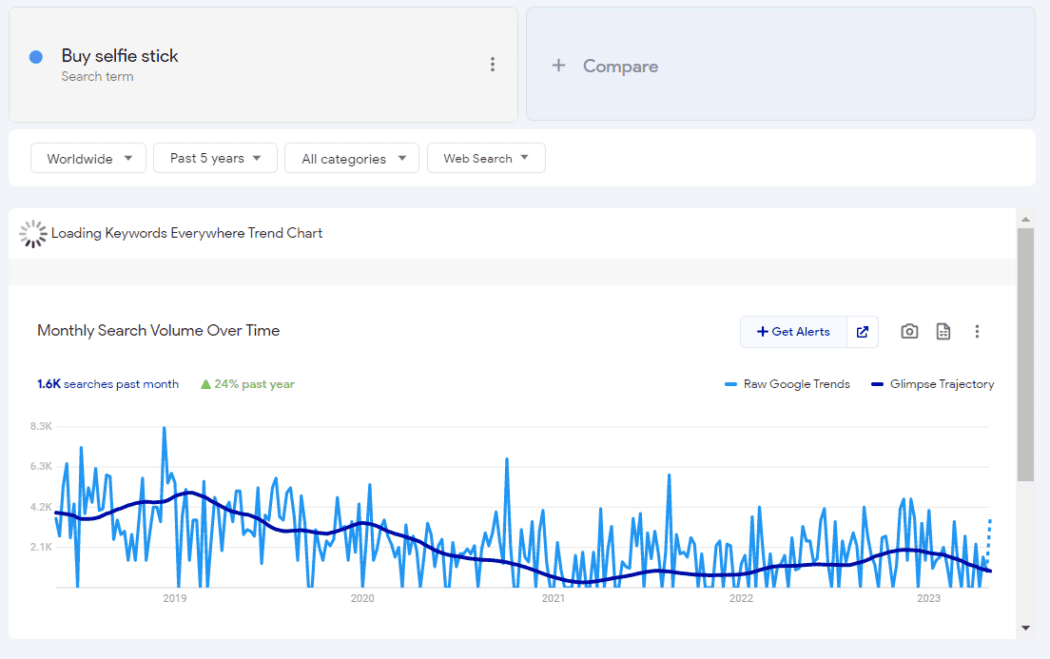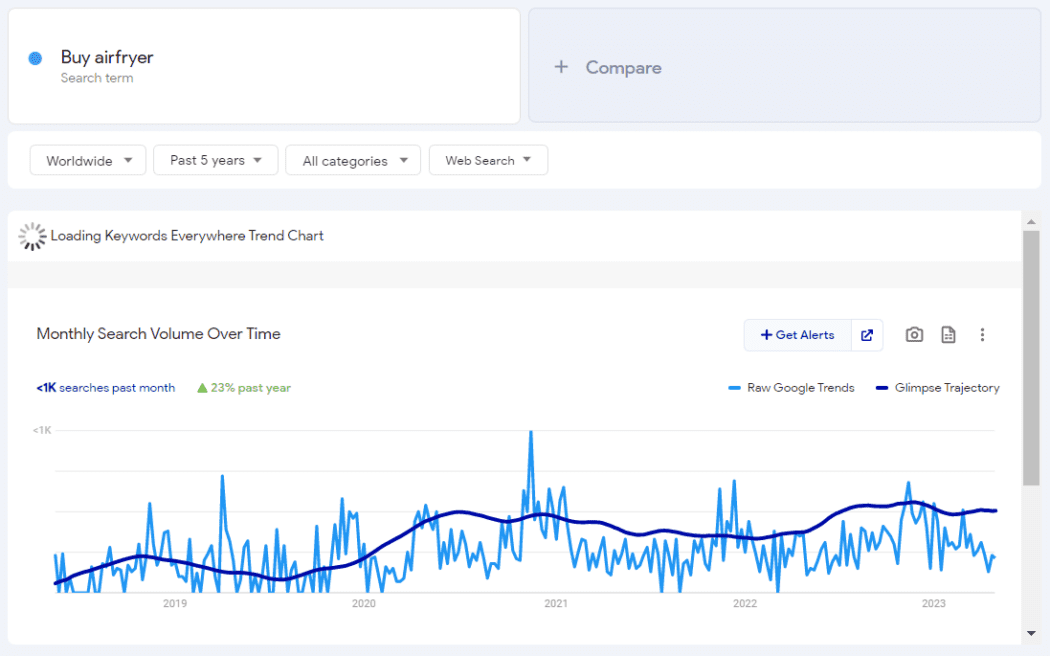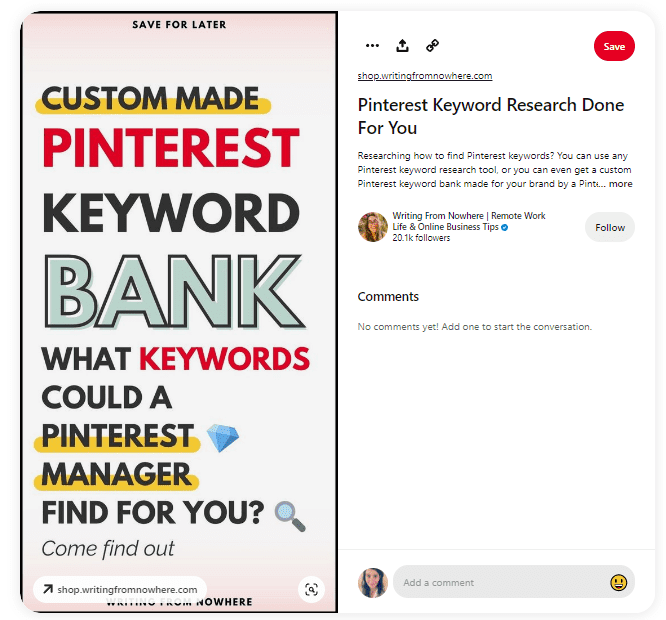Starting A Business
How to start a business in 2023 | 10 step guide
Published
9 months agoon

Get up to 30%* off! Get going with GoDaddy!
There has never been a better time to start a business. In our hyper-connected digital age, you can set up a website, online store, and entire brand from anywhere in the world.
Online business-building tools have never been more accessible—and with the right approach, you can grow a loyal customer base quicker than you might think.
If you’re wondering how to start a business in 2023, we’re here to help. In this guide, we’ll look at the essential steps you need to take to make your business a real success. Here we’re going to cover:
FAQs
Ready? Great. Let’s get started.
Related: How to start a business
1. Find a business idea
First of all, to enjoy sustainable commercial success, you have to find a business idea that is not only feasible but something you feel passionate about.
If you have a shortlist of business ideas in mind, dig a little deeper by carrying out a little market research. Look at brands in your potential niche and find out how their consumers engage with them while looking at overall demand based on public sales or growth data.
Doing so will give you inspiration for your own business ideas. Armed with your market and competitor research, you can develop your ideas by considering:
- What am I passionate about?
- What are my specific skills and expertise?
- Which subject matter am I most passionate about?
- Can I feasibly sell or promote the product or services in my potential niche?
- What unique spin can I put on well-trodden business ideas or concepts to stand out?
- What gaps or weaknesses can I exploit in my potential niche or market?
Ask yourself these questions and you’ll eventually land on a business idea that has the potential to scale while keeping you engaged and inspired in the long term.
Related: Read our guide on essential small business ideas for more small business inspiration.
2. Use market research to validate your idea
Once you’ve landed on a solid business idea, you’ll need to see if it has any legs. We just touched on the concept of market research, but now we’re going to drill down a little deeper.
When brainstorming business ideas, you will have scratched the surface. But, to really validate your concept, you must get under the skin of your industry as well as your target audience. In addition to gathering industry insights and data, you should build buyer personas that represent your ideal target audience.
During this phase of the operation, it’s also important to conduct extensive market research as well as market analysis. Here are some market research and analysis ideas for your consideration:
- Conduct consumer surveys across channels (phone, email, social media, mobile app, etc.).
- Hold focus groups to gain a deeper understanding of how your target audience might perceive your brand and what you have to offer.
- Observe how your target audience engages with potential competitors on social media as well as the related subject matter they’re discussing online.
- Explore public data related to your target market to uncover consumer buying patterns as well as sales trends. This will help you validate your idea while giving your business planning a definitive direction—which brings us onto our next point.
3. Create a business plan
Now your idea is validated and you’ve got a handle on your target market, you’ll need to start planning. When it comes to knowing how to start a business, developing your plan methodically is a vital skill. Here are some tips to help you navigate the process like a boss:
- Consider your “why”. This will help you gain an understanding of your key motivations for starting your business as well as what you want to achieve
- Outline plans of action or initiatives that represent your brand mission and what you do
- Define your key business goals using timelines and milestones to keep you on track
- Write an executive summary that states all essential information related to your business’s aims, goals, and products
To break down each step in more detail, read our essential guide on how to write a business plan and use our official business plan template to make sure you don’t miss anything important.
4. Get funding, explore finance options
To get your business off to a flying start, you’re going to need to get the right level of funding. The funding options you explore will depend on the type of business you’re looking to start.
If you’re looking to start a solely online business and scale up, you could use your personal funds or savings to get up and running. Doing so will give you complete control on your decisions, allowing you to scale the business on your own terms. But, it’s worth noting that if your business struggles or fails to achieve profit, you will be solely responsible for paying back any debt.
Other business funding options include:
- Crowdfunding: Using dedicated crowdfunding platforms, you can inspire people to donate to your business venture in return for incentives or equity. This can be a very effective form of fundraising—and there have been many crowdfunding success stories over the years.
- Gain a line of credit: Akin to obtaining a personal line of credit, you can gain a line of business credit. The terms, limits, and interest rates will depend on the nature of your business as well as factors including your financial history and credit rating.
- Get a grant: Another way of securing a healthy level of funding for your business is getting a grant. If your business mission is rooted in building a better community or inspiring innovation, you could be eligible for a healthy grant from the Federal Government.
- Pitch to investors: Researching investors in your niche and pitching to them is an excellent way to get funding as well as professional backing and expertise. This is certainly an avenue worth exploring if you’re looking for startup capital as well as help with your business’s launch and development activities.
Interested in learning more about planning for business funding? Our guide covers the cost to start a business in full detail.
5. Choose a legal business structure
When starting a business in 2023, settling on a water-tight legal structure is vital. Before you officially register your business, you have to decide on a concrete business structure—and the type you choose will impact your business from a legal standpoint. So, take your time when considering these structures.
Sole proprietorship
If you own your business independently, you can opt for sole proprietorship. This means that you will have full autonomy over your business, but you’ll be responsible for all debt, obligations, and finances.
Pros:
- You will be in full charge of business decisions, development and planning
- You will receive all of the business’s profits
- You will find filing for tax simpler
Cons:
- Managing everything on your own could burn you out and limit your potential for growth
- If you hit financial hot water, you will be liable for settling any debts or arrears
Partnership
Combining forces with another budding business owner will give you double the startup as well as another person who is liable for the red tape as well as the financial aspects of the business. More often than not, two heads are better than one—forge the right partnership and you could see your business thrive from the get-go.
Pros:
- You will have twice the skills, perspective, and financial scope
- You will have another person who is responsible for the running as well as financial and legal aspects of the business
Cons:
- If you and your partner disagree on any aspect, this could cause the kind of friction that could derail progress and stunt growth
Corporation
As a corporation, you will separate your personal assets from your business assets. This means that while your company can incur debt and be subject to legal disputes, your personal finances and assets will remain protected. There are many different forms of a corporation to consider, some of which offer access to some pretty decent investment opportunities.
Pros:
- You will gain access to excellent capital options
- You will benefit from certain tax breaks
- You will be able to protect your personal assets
Cons:
- Corporates can be costly to form and run
- There can be a lot of red tape involved in the running of a corporation
Limited liability company (LLC)
This type of business structure is one of the most common options for new businesses. As a limited liability company (LLC), you will benefit from the legal protection of a corporation while also reaping the tax rewards of a business partnership.
Pros:
- The setup process is relativity straightforward
- You will gain access to a healthy choice of capital and funding options
- You will have a certain level of protection concerning your personal finances
Cons:
- Your investment options can be limited with an LLC
- You can be subject to fairly costly annual maintenance fees
Want more information on how to start an LLC? Our guide has you covered.
Weigh up the pros and cons of each business structure, taking your aims and goals into consideration. At this point, you will want to brainstorm a catchy business name to make it official and bring your brand to life.
Once you’ve decided on your brand-boosting business name, you secure the appropriate domain name.
6. Register your business and get the required licenses
The next step in your how to start a business journey is registering your business and getting any required licenses.
By choosing your business name and settling on your business structure, you will have already started the registration process. To complete the registration process and obtain the right licenses, you will need to:
- Check the full registration requirements depending on your legal structure
- Work though the registration requirements of any regions where you’re looking to trade or operate
- Register for any taxes
- Obtain an employee identification number (EIN)
- File any relevant trademarks
- Find out which business license is relevant to your organization and start the application process
7. Open a business bank account
With your business almost up and running, you’ll need to open a bank account. In 2023, there is no end of choice when it comes to setting up a business bank account.
You should choose a bank account with benefits and features that suit your business’s size as well as your goals.
Tip: Create a shortlist of business bank accounts with flexible loan options as well as excellent customer service and online banking applications.
To set up your business bank account, you will need:
- Official business formation documentation
- EaIN or tax ID numbers
- Your official business name and location
- Date the business was set up or established
- Your Social Security number, address and date of birth
8. Get business insurance
In addition to opening your bank account, you will also need to get business insurance. If you don’t, you could find yourself footing a colossal bill if any unexpected issues, damages or disputes arise.
Even as a small business, you will need to cover yourself with the right kind of insurance to protect yourself against any eventuality. At the minimum, you will need general liability insurance (GL) to cover you for loss, injury or damage to yourself or a third party.
If you’re offering a service rather than tangible goods, it will also pay to get professional liability cover incase of any consumer-facing mistakes you might make. Also, as your business scales, you might also consider employment practices liability insurance. This type of cover will protect you against any potential employee claim or complaint.
9. Build your website
At this point, you will be ready to build your website and bring your business to life. Your website or online store will be the digital hub of your entire business—so getting the design and the functionality just right is essential.
If you’re interested in starting a website for your business, here are some hand-picked resources to help you out:
Tip: To build an online store that is slick, wonderfully designed, and easy to navigate, try the powerful and easy-to-master GoDaddy website builder. Or build an online store with our slick and savvy ecommerce tool. And tie your business together with a GoDaddy POS system to accept payments anywhere.
10. Launch and grow your business
“There’s no shortage of remarkable ideas. What’s missing is the will to execute them.”—Seth Godin
If you’ve followed all of the steps in this how to start a business in 2023 guide successfully, you’ll be ready to launch.
Once you build a buzz about your big business launch across various channels including email and social media, you can start selling and take measures to grow year on year through marketing campaigns and sales initiatives.
Starting a business in 2023 is a challenging but potentially rewarding venture. Be persistent, play to your strengths, take the time to ensure you’ve covered every base, and you’ll be winning on the commercial battlefield in no time. Best of luck.
FAQs:
How can a beginner start a business?
A beginner can absolutely start a business. As long as you have a clear idea of your goals and a passion for what you do, you can make your business a real success. Follow the steps in this guide and you’ll be up and running sooner than you might think.
How much money do you need to start a business from scratch?
The cost of starting a business will vary depending on your industry or business model of choice. But, research from the US Small Business Administration shows that most small businesses cost around $3,000 to get started. And, the majority of home-based ventures cost $2,000 to $5,000 to set up.
Can I run a business by myself?
There is no reason that you can’t run a small business by yourself. With the right resources and the right approach, you can set up, launch, and operate your business. Going solo is more than possible, but with so much to consider it’s a huge undertaking. As your business scales, hiring a small team or getting a partner on board will be a good idea. That way, you can further accelerate your commercial growth.
How do you create a legal organization?
To move your business idea into a legal organization, here’s a quick rundown of what you’ll need to do. First, come up with a unique name for your business. Next, figure out what kind of business structure works best for you, such as a sole proprietorship, partnership, LLC or corporation. Once you’ve got that sorted, pick a good location for your business and make sure you’ve got all the necessary permits and licenses. Then, get all your paperwork in order and register with your state. After that, it’s time to set up your financials, like opening a company bank account and staying on top of your taxes. Just remember, forming a business can be a bit complicated, so it’s always a good idea to chat with a tax advisor or lawyer to make sure you’re doing everything right.
What is the easiest business to start?
A service-based business is often considered the easiest to start as you don’t have to deal in physical stock or inventory. But, in 2023, it’s never been more accessible to set up and launch a successful online business. In the digital age, tools exist to help you set up an ecommerce store or build a website without technical expertise. Follow the right steps and almost every kind of business will be within your reach.
What is the simplest legal form to start a business?
A sole proprietorship is the easiest business legal structure to set up. If you have a little capital of your own, you can apply for a sole proprietorship with ease. You will have complete control over the entire business, but be aware: you will be responsible for the financial as well as legal aspects of the business.
Marketing
How to start selling online, full guide for beginners
Published
8 months agoon
May 30, 2023
Get up to 30%* off! Get going with GoDaddy!
Is selling online over-saturated? No way! It’s still very doable to make money from anywhere with a laptop. You just need to learn how to sell online and have the dedication to make it work.
This guide will give you proven methods to sell products and services online with insights from people making money using digital platforms. Plus, we’re sharing tips for building your own website and the secrets to selling with social media.
How to start selling online
Before jumping in and making your first sale, you need to know what you’re selling and who to. Through market research, you will find the answers.
Do market research
Once you’ve brainstormed the products or services that you’d like to sell online, you’ll need to see if there’s a market for those products. To do this, there are market research tools online that you can use.
Market research involves gathering information about your target market, competitors and industry trends. The goal is to determine whether or not your ideas are likely to make money and, if they are, how you can reach an audience interested in buying from you.
Market research includes:
- Competitor analysis to see what others are doing and what works for them. You need to look at where you fit within the market, what makes you stand out and what you can offer that competitors don’t.
- Analyzing online forums where your audience hangs out to build a picture of who your audience is and what they need so that you can target them better.
- Look for trends to discover products people are looking for now.
Top tip: When it comes to identifying trends, you can use Google Trends, which is a free tool. Search the product or service you’re considering selling and see how interested people are.
For example, a search for ‘buy selfie stick’ shows that searches for this product peaked in 2018 and have steadily declined in search volume; probably not the product for you right now.

Searches for air fryers, on the other hand, increased in 2020 and have remained relatively stable ever since.


Choose a niche and product
If you’re starting your online selling venture from scratch, it’s best to start with a niche product or service.
Niching allows you to build out an audience looking to solve a specific problem. You will get to know your buyer deeply, and only then can you provide them with all the reasons why your chosen product or service helps them.
Top tip: it will help if you genuinely like and believe in what you’re selling, especially if you’re going to sell on social media (more on that later).
Choose a platform or create an online store
The key to choosing a platform – or platforms – is not to spread yourself too thinly. If you’ve done your market research thoroughly enough, you will already have an idea of where your audience is hanging out online.
Top tip: consider your time. You are better off covering fewer platforms well than covering many badly. You can always scale later.
Market and sell
Once you’ve covered the above, it’s time to jump into your marketing plan. You’ll need a marketing plan that considers the buyer funnel. Think about the content you need to create to persuade prospective customers to buy from you. You will also want to build trust as part of your marketing strategy.
Top tip: sites like Reddit and Quora are free and provide insight into your audiences, their problems, their issues with competitors and so much more. The same applies to Google’s People Also Ask.
Sticking with the idea of selling air fryers, a quick search of the word ‘air fryers’ returns commonly asked questions about pros and cons.


Popular platforms where you can sell products online
Now that you’ve got your marketing plan started, it’s time to choose a platform for selling online.
Sell on your own online store
You can’t sell online without a digital store or platform. While you can sell on social media (more on this later), an owned channel like a website can become an asset over time.
Here’s some guidance on setting up your own platform.
Choose a domain
Check your desired domain name is available and buy online. Your domain name should be the same as your business name. It should be memorable, easy to spell, and relevant.
Create your store
Create an online store using GoDaddy’s Website Builder and set up shop within a day. You can add products, take payments and sell online from anywhere in the world.
Add payment processing
You need to integrate your online store with a payment gateway to accept payments. The gateway you choose comes down to personal preferences, terms and conditions and transaction fees.
PayPal is free to integrate but may charge a higher rate per sale, but if you want to test your ecommerce store before committing to a gateway like Stripe, PayPal can be a good start.
Manage inventory
Inventory management is crucial for any ecommerce business, especially if you receive orders online. If you have physical products, your inventory must match what’s available online; otherwise, your risk selling more products than you have in stock, resulting in disappointed customers.
If you’re selling online and offline, stock inventory can get more complicated as you must regularly update your online inventory. Larger businesses have inventory management systems for this, but as a start-up, you can sometimes manage inventory updates with good administration.
Choose a shipping provider
Shipping can get rather complex, especially if you’re planning on handling international orders. You need to think about shipping costs and how you will manage them. Some businesses choose to absorb shipping so there’s no obvious cost to the buyer. Of course, if you do this, shipping costs should be factored into your product price.
Shipping calculations vary, but here are some options.
- Flat-rate shipping is as it sounds. The business charges the same shipping cost for all packages, regardless of weight or distance. Flat-rate shipping should be carefully monitored. With a flat rate, your business expects to profit on some purchases and lose on others, especially if you’re shipping internationally. Flat-rate will only work if the profits and losses are approximately balanced.
- Actual cost is a calculation where the business calculates the exact shipping cost for each package and charges this to the customer. This is usually done automatically at checkout using a shipping calculator. The calculation will take into account location, weight, size and more.
You can incentivize a purchase with free shipping, and you can also offer more expensive shopping options for faster delivery.
Top tip: Test your shopping experience before you start. You must ensure your prospective customers have a seamless experience from finding you to buying. That means no broken checkout.
Sell on Marketplaces
Marketplaces like Amazon, Etsy, eBay and Craigslist offer excellent opportunities to reach a broad audience and sell your products. Service-based businesses can try Freelancer, Upwork, Toptal and more.
You can sell on many of these marketplaces and your website. You can try the marketplaces and see how they perform.
Naturally, each marketplace will take a percentage of the sale, so you’ll need to factor that in.
Amazon
Any ecommerce brand should at least try out Amazon. It is a search engine for products, and some of your buyers will go to Amazon before Google.
Pros
- Amazon is one of the largest ecommerce marketplaces.
- It’s simple to set up a seller account and list your products.
- Users may use Amazon as a search engine rather than Google, so you’re reaching a new audience.
Cons
- Amazon has over two million sellers, so you need good product photography to stand out.
- For users to find you on Amazon, you need to know a little about Amazon SEO.
Etsy
Etsy is a popular marketplace for crafts, handmade and vintage products. But Etsy is also an excellent marketplace for digital products like guides, ebooks and more.
Pros
- If your product is crafty, handmade or vintage, you can know that users are heading to Etsy to find it.
- It’s cheap to start selling.
Cons
- It is a busy marketplace with lots of sellers.
- You don’t have the same control over your Etsy store as you do your store.
- Customers often expect personalization on Etsy.
eBay
eBay is one of the oldest ecommerce marketplaces. By now, most of us have probably sold (or tried to sell) something on eBay.
Pros
- It’s familiar.
- You may already have an account with some reviews to build trust.
Cons
- eBay’s UX isn’t as friendly as some alternatives.
Craigslist
Craigslist is a classified advertisements website that allows you to sell products locally.
Pros
- There are no fees
- You can sell locally, which helps with shipping fees if you want to keep your business geographically small.
Cons
- Local sales only can be limiting once you have the desire to grow.
Sell on social media
Once the products or services are available to buy, your first task is to drive traffic to the site. Here are some tips for promoting and selling your products digitally.
Social media
Social media is a great place to build an audience and, importantly, a brand. Through social media, you get to know your audience, and they get to know you; social media is personal.
TikTok
TikTok is a platform credited for its generous algorithm providing accounts with excellent reach. As one of the fastest-growing platforms with over 1 billion users, your audience is likely hanging out there.
Mia Steele is a TikTok creator who began monetizing content in April 2022. She reports great success on the platform.
Steele says, “In less than six weeks of posting on TikTok and diving into User Generated Content (UGC), I began monetizing my content. I managed to replace my income by creating content and ads for brands.
“As my TikTok following grew, I even sold my own digital products to my audience.”
Steele’s top tip for a successful social media account is, ‘Devote time to cultivate and nurture your own audience, so you can capitalize on the traffic to sell your own products.’
TikTok also has TikTok Shop that you can access once you have 1,000 followers. TikTok Shop allows you to take a commission from items promoted and sold within your videos.
Facebook and Instagram
Like TikTok, you can grow an audience on Facebook and follow the path of selling digital products. Facebook and Instagram also have Shop functionality to sell products directly on the platform.
Facebook and Instagram benefit from the ability to post from Instagram to Facebook automatically, which will save you time.
Pinterest allows you to create a shoppable feed to list your products and sell them directly on the platform. You can also use Pinterest to drive traffic to your online store or blog.
Pinterest marketer Kayla Ihrig says, “The best way to make money on Pinterest is by making pins that lead to your services or products. Unlike other platforms where you need to constantly share valuable information to market your product or service, on Pinterest, users are searching for it and just want to be able to find it. Creators need to create images or videos (called pins) that display what they offer and then optimize them for search. Then, when a user searches for a solution to their problem, they find your content and go back to your website.”
Ihrig’s pin, pictured below, is the perfect example of a pin that leads a user to her service-based site.


Selling on social media opens a window of opportunity for entrepreneurs. You can sell your own products and services or explore affiliate and email marketing, which you can advertise in tandem with your platform.
Affiliate marketing
With a combination of your website and social media, you could sell products online without actually owning or stocking a single item. Ideal for the entrepreneur craving ultimate freedom.
With affiliate marketing, you take a percentage of sales made via your channels using trackable affiliate URLs.
Mia Steele drives traffic from her social media following of 20,000 to her website. She started with a domain name from GoDaddy and started her journey into affiliate marketing. Steele says, “Within just seven months, I had joined more than 15 affiliate programs, built an email list of over 3000 subscribers, and earned over $90,000 in commissions by promoting products on TikTok and through my blog.”
The key, Steele says, is “Building your email list from day one. I underestimated the power of an email list until I ventured into affiliate marketing, and I regretted not starting earlier. Having a compelling free lead magnet and consistently producing high-quality content to drive traffic to your offers will be the key to your success.”
Email marketing
Email marketing is a cost-effective way to reach your target audience and promote your products. Done well, every email you send can make money. At least, this is the case for the team at Siligrams.
Arlene Battishill, Chief Marketing Officer, says, “Our email marketing is killing it with an average 55% open rate. Every email makes money. A recent email marketing campaign – a series of 10 daily emails – had an average 63% open rate because the campaign was nothing but stories and bad jokes and had absolutely nothing to do with our product!”
The secret to Battishill’s campaigns is consistency and humor; not every email is a sales plea that likely contributes to the sales success. Siligrams choose to humor and engage their audience instead of going for a hard sell. Remember, people buy from people.
Top tip: you can create and send stylish emails in bulk using GoDaddy’s marketing suite.
Trust the process when selling online
If it were easy, everyone would do it. Although the online selling path is simple, it requires dedication. Commit to your product, trust the process and be consistent.
As a budding entrepreneur, you have a lot to explore, and a platform that works for one business may not work for another, so be bold and experiment.
Sell online FAQ
Finally, we’re answering some of the most asked questions when it comes to selling online.
How do I sell online for the first time?
Your first online sale is the result of small steps made consistently. Follow the steps in this guide, from idea generation and market research to marketing and set-up, and you will make your first sale.
What are the most profitable items to sell online?
The most profitable items to sell online vary based on trends, but some items stand the test of time. These items include SaaS products via affiliate marketing since you earn recurring revenue.
For physical products, you can explore items in the following categories:
- electronics
- fashion accessories
- beauty products
- home decor
- health and wellness
Naturally, these categories are also some of the most competitive, and you should consider the challenges. For example, electronics can go wrong, resulting in customer service issues and refund requests. Health and wellness is challenging to build authority in, especially if you’re relying on a new, owned website to sell from.
How can I sell products online legally?
The legal requirements for selling online can vary, and you must research to ensure you comply fully with laws and regulations. You must consider registering your business, correctly paying your taxes, and customer privacy and security. Advertising online also requires you to adhere to rules and regulations, from product information to the types of images and ad copy.
What is the easiest platform to sell online?
Ease of use is a priority for any platform that allows you to sell online. You can set up an eBay, Etsy or Amazon store within a day. The platforms are already geared to helping people like you sell.
If you want to own your platform, which is not a good idea, website builders help you set up shop as quickly and efficiently as possible.
Starting A Business
Guide to Starting a Transportation Business: Key Steps and Strategies
Published
8 months agoon
May 26, 2023
Did you know that the transportation industry relies heavily on the trucking sector for 72.5% of its freight transportation? That’s a lot of goods being moved around the world on the back of trucks!
And guess what? The future looks even brighter for this industry. Experts predict the global transportation industry will experience a compound annual growth rate (CAGR) of 38.5% until 2027.
With such promising statistics, it’s no wonder that starting a transportation business can be a smart decision. Whether you dream of running a taxi service, delivering packages to people’s doorsteps, or even managing a logistics company, the opportunities are endless.
Whatever business option you may select, in this article, we’ll walk you through the key steps and strategies to help you kick-start your transportation business. So, let’s begin!
Conduct Market Research
Before diving into the transportation business, it’s crucial to conduct market research to understand the demand, competition, and potential opportunities in your target market. It’ll help you make informed decisions and tailor your services to meet customer needs effectively. Let’s explore this step further by asking three important questions:
1. Who are your potential customers?
To identify your potential customers, consider demographics such as age, gender, location, and income levels.
For example, if you plan to start a rideshare service in a college town, your target customers might be students looking for affordable transportation options.
2. What is the level of demand for transportation services in your area?
Assess the existing transportation options in your area and determine if there’s a demand gap.
For instance, if you discover that there’s a high demand for medical transport services for the elderly population, you could explore starting a specialized medical transportation business.
3. Who are your competitors, and what sets you apart?
Learn about the leading service providers in your area and how they operate their business. Analyze their strengths and weaknesses and determine what unique value you can bring to the table.
For instance, if you’re starting a courier service, you could differentiate yourself by offering faster delivery times or specialized handling for fragile items.
This way, you can gain valuable insights into your target market, understand customer preferences, and develop a competitive edge.
Create a Business Plan
Needless to say, every successful business starts with a well-crafted business plan. It serves as a roadmap, outlining goals, strategies, and financial projections. Ultimately, it helps one stay focused, secure funding, and make informed decisions.
So, to kick-start your business, you must take time and create a robust business plan. Make sure to include details such as your target market, competitive analysis, marketing strategies, operational procedures, and financial forecasts.
Also, be realistic and thorough in your projections, such as considering expenses like vehicle acquisition, maintenance, fuel, insurance, and marketing costs. Agree or not, it will come in quite handy when pitching the investors.
Obtain the Necessary Permits and Licenses
It doesn’t matter what industry you are a part of; complying with legal requirements is a must for the smooth functioning of the business. So, contact your local government or transportation authority to understand the permits and licenses necessary for your specific transportation service.
This may include commercial driver’s licenses, vehicle permits, insurance coverage, and business registrations. You must meet all these legal obligations before launching your business.
It will not only help avoid any legal issues down the road but will also demonstrate your commitment to operating a legitimate and compliant transportation business. It also builds trust with your customers, who expect an honest and reliable transportation service.

Acquire Vehicles and Equipment
The backbone of your transportation business will be the vehicles and equipment you’ll use. Not only do you need reliable vehicles to transport passengers or cargo, but you also need to ensure that they are well-maintained to avoid service disruptions.
According to professionals at Auto Glass Zone, one crucial aspect of vehicle maintenance is taking care of the glass components, such as windshields and windows. It’s because these provide visibility and safety for both drivers and passengers.
But, continuous exposure to road conditions and weather elements can damage chips, cracks, or other glass. That’s why it is essential to promptly repair or replace any damaged glass to maintain the safety and integrity of your acquired vehicles.
In addition to this, consider factors such as fuel efficiency, maintenance costs, and cargo capacity when acquiring vehicles and equipment for your business. Continuing the example above, if you’re providing courier service, you may also need equipment like hand trucks, dollies, or refrigeration units.
Build a Strong Network
Apparently, networking plays a vital role in the transportation industry. It involves establishing relationships with suppliers, clients, and other businesses in related industries. It opens doors to collaboration, referrals, and valuable partnerships.
For example, connecting with a local delivery service can lead to partnership opportunities where you can combine forces to provide comprehensive logistics solutions. Additionally, maintaining a strong online presence through a professional website and social media platforms allows you to showcase your services, attract customers, and engage with your audience.
Even so, keep in mind that networking is a two-way street. So, be proactive in reaching out, be a reliable and helpful partner, and nurture your connections.
Focus on Customer Service
Last but not least, when running a successful transportation business, one of the most critical aspects is providing excellent customer service.
Why is customer service so crucial? Well, imagine you’re a passenger in a taxi or waiting for a package delivery. How would you feel if the driver or delivery person was rude, unhelpful, or unresponsive? It would certainly leave a negative impression and make you think twice about using that service again, right?
Focusing on customer service can set your business apart from the competition and build a loyal customer base. So, train your staff and promptly address customer inquiries and concerns. You can also consider implementing technology solutions like GPS tracking systems or mobile apps to improve efficiency and communication with your customers.
![]()
Final Words
Starting a business requires dedication, perseverance, and adaptability. So, stay informed about industry trends, continuously evaluate and improve your operations, and be open to learning from your experiences.
With the right strategies and a passion for providing reliable transportation services, you can navigate the road to success in the transportation industry.
Starting A Business
Want to Start a Business in France? Four Key Tips for American Entrepreneurs
Published
9 months agoon
May 2, 2023By
Newsroom
For many Americans, the prospect of France is a romantic one, with hugely popular films and TV series like Amelie, Chocolat and Emily in Paris cementing France’s reputation for glamour, charm and indulgence. But while the appeal of France’s lifestyle and culture is undeniable, the country also offers something that’s less well known – a swath of business opportunities ready to be seized by internationally-minded American entrepreneurs.
With an estimated 4,500 American companies already operating in France, it’s clear that the country is an attractive prospect to American business people, and there is the potential for great success in La République française. However, if you want to start a business in France (or expand there) as a US citizen, it always pays to know as much as possible beforehand in order to plan thoroughly, avoid common pitfalls and give your business the best chance of thriving.
Why France?
As the third-largest economy in Europe (and seventh in the world), there is a long list of reasons why France is so appealing to business people, some of which include:
- France is a vibrant and diverse nation that boasts a skilled workforce, a large consumer population and access to the world’s largest trading bloc through its membership of the European Union.
- It is also welcoming and business-friendly, with the French government offering financial incentives to both new and established businesses and investing heavily in research and development.
- France has a strategically useful location buttressed by a highly developed transport infrastructure, greatly contributing to ease of travel and transit both within and outside of the country. London, for example, can be reached in under 2 and a half hours by Eurostar from Paris.
- France isn’t only large in terms of its economy – by surface area, France is the largest country in Europe and is made up of thirteen regions that all represent unique opportunities for entrepreneurs. It also borders eight countries and has a Channel, Atlantic and Mediterranean coast.
- An international centre of business, the Paris region enjoys global status as a major business hub, and is the number one region in Europe for hosting the world’s top 500 corporate headquarters.
Five Tips For Starting Your Business in France
One: Be prepared to navigate bureaucracy
For foreign company founders from outside the EU, the EEA or Switzerland, there are predictably some i’s to dot and t’s to cross when setting up a company in France, and the process can take some time. That being said, however, France is welcoming enough to entrepreneurs that you may find there are fewer hoops to jump through than you first expect, and there are many resources you can access to ease the process.
Anyone can establish a business in France by taking steps such as registering a business address and opening a bank account in the country, but if you would like to move to France to embark on your new venture you should apply for a long-stay visa known as the “Entrepreneur/Self-Employed” (VLS-TS) temporary residence permit.
Eligibility is determined via factors such as your ability to provide evidence that you will be engaging in an economically viable activity during your stay, and when it has been approved, the visa authorises residence for 12 months. During this time, you are allowed to live in France and engage in the commercial activity that you have outlined in your application.
This will involve a trip to the French consulate, of which there are ten across major cities in the USA. Once established, you will have to register your French business according to the correct category of your enterprise. It is also important to bear in mind that France has particular regulations across various business sectors and employment practices, and that corporate banks in France require minimum capital investments.

Two: Start learning the language
With a population that has originated in every corner of the globe, multilingualism is not unusual in the USA – one in five US adults speak a language other than English at home, (of which Spanish is the most common). But while the USA has no official language, it’s fair to say that English is the de-facto, and most particularly in the business world.
It is also the case that English is the most widely understood language in the EU, and a significant proportion of Europeans speak English as their second language (with an impressive 25% able to hold a conversation in two additional languages to their mother tongue). What’s more, 39% of French people report they are able to speak English, and many ex-pats move to the country without being able to speak French.
Despite this, it would be wrong to assume that you can easily default to English and thrive while running a business in France. The population of France primarily speaks French in both personal and professional contexts, and the French people have considerable language pride.
English might be widely spoken in business circles, but demonstrating your willingness to learn and use French phrases of greeting will be greatly appreciated, and you should bear in mind that proficiency in English is not a given. Over time, many ex-pats discover that shaping up their French language skills is key to taking advantage of everything the country has to offer.
You should also account for the fact that French is the only accepted language for official documents and contracts, and as 61% of French people don’t speak English, you will need a plan for smoothing over language incompatibilities in your business operations.
Three: Consider your new audience
In many important ways, France is not vastly different from the US, but it is still important not to underestimate cultural differences when setting up or expanding a business here. While certainly smaller than the US, it’s also important to remember that France is far from small by European standards, and like the differences between US states, there is significant regional variability across the country.
Whether it’s something simple such as the greater prevalence of smoking amongst French adults (around 33% versus 12% in the US) and the lack of a widespread tipping culture, or more complex subtleties in language, politics and history, there are many things that may be surprising about France as an American. This is why we would suggest seeking the advice of those who know the country well in many points of your business to understand how it may land with a French customer base.
There are also differences in laws and regulations which may affect your business, so it’s always worth doing thorough research as you draw up your French business plan to identify and account for factors which may not apply in the USA.

Four: Understand France’s working culture
American working culture is rather set apart from its European friends, with US citizens generally working longer hours, having less vacation time, and eating lunch (if they don’t skip it) at their desks. It also isn’t unusual for people to take calls and answer emails outside of work hours, and employers tend to have more flexibility when it comes to hiring and firing.
The French, on the other hand, tend to have a more leisurely pace of life which is facilitated by both government-mandated workers’ protections and the expectations of their working population at every point of the pay scale. This may take some adjustment when running a business and is something you’ll need to plan around – but the upside is, if you have chosen to live in France, you’ll get to enjoy this slower pace of life too!
Some things to take into account regarding French working culture are:
- The French will take their lunch break away from their desk, so unless you organise a specific lunch trip, this is a bad time for calls, meetings and emails (if you need an immediate response).
- They don’t only have significantly more holiday entitlement than Americans usually enjoy, they actually take it (whereas the average US employee who receives paid vacation only actually takes 54% of the allotted time each year.) This is usually most evident in July and August, when business slows down considerably, and as many employees will book more time off around public holidays, it pays to plan around these times of year.
- Since 2017, managers and employees of companies with more than 50 staff have not been required to answer emails outside working hours, and employees in smaller companies are likely to follow suit.
- French corporate operations are, for the most part, very hierarchical. When doing business with another company, take the time to understand the chain of command to ensure you are talking to the right people in order to get results.
- Hiring in France is an expensive proposition. Employers must account for high individual taxes when determining employee wages and the slate of employment benefits they are expected to provide. While these costs are high, however, people doing business in France tend to be repaid with a skilled and secure workforce.
- Networking is often key to success in the French business world, with personal recommendations often meaning more than accolades and titles. Forging business relationships in France can be more difficult than in America (although the collaborative nature of American business may give you a ready-made advantage), but they tend to last for a long time, making them well worth the effort.
There is a world of opportunity to be discovered by American entrepreneurs who take the plunge and start a business in France, and with proper research, a comprehensive business plan, and that famous American work ethic, success à la française can be well within your grasp.
This post was written by Katya Puyraud, a company formation expert at EuroStart Entreprises, who help entrepreneurs start a business in France and take the headache out of opening a company abroad.

Landed For Success Showcases Inspiring Stories By Dr. Tom Chesser Achieving #1 International Bestseller Status In Canada, United States, Mexico, Europe & Asia

Bob Chitrathorn Renews Membership with the Financial Services Institute

Ryan Quante, Founder of Care Income Advisors, Interviewed on the Influential Entrepreneurs Podcast Discussing Dementia Care

Hiring a Remote Worker? It Takes More Than an Internet Connection

Flexible, shorter-term apartment startups gain more traction

Six Office Remodels That Will Help Improve Work Culture
Trending
-

 News3 days ago
News3 days agoRyan Quante, Founder of Care Income Advisors, Interviewed on the Influential Entrepreneurs Podcast Discussing Dementia Care
-

 News5 days ago
News5 days agoSensationally Wired Launches the NeuroSoothed Sleep Method Course, Offering Transformative Techniques for Improved Sleep
-

 News3 days ago
News3 days agoBob Chitrathorn Renews Membership with the Financial Services Institute
-

 News3 days ago
News3 days agoJohn Martin with Compass Wealth Strategies Interviewed on the Influential Entrepreneurs Podcast Discussing Using Life Insurance for Retirement
-

 News2 days ago
News2 days agoLanded For Success Showcases Inspiring Stories By Dr. Tom Chesser Achieving #1 International Bestseller Status In Canada, United States, Mexico, Europe & Asia
-

 News3 days ago
News3 days agoDOSS Celebrates Significant Milestone: First DOSS Home Center Franchise Opens in Flower Mound, Texas
-

 News3 days ago
News3 days agoDr. Annette Greenwood Empowers Women Over 50 to Triumph Over Adversity and Rediscover Life’s Magic

